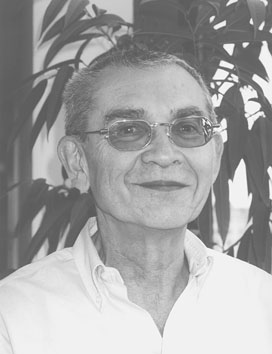
Yuri Ivanovich Manin
It is a great pleasure for us to dedicate this issue of the Moscow Mathematical Journal, and the two subsequent ones, to Yuri Ivanovich Manin on the occasion of his 65th birthday.
It is unnecessary to present Yu. I. Manin as a mathematician, and in any case this cannot be done in a short dedication. The variety of papers presented in these issues reflects the diversity of his mathematical interests. His research is extremely broad and is characterized by special attention to interrelations of different branches of science, yet it clearly has two principal centers: the meeting point of number theory and algebraic geometry, and that of algebra and physics. 1
Manin's impact exceeds that of his own research results. His books on algebraic geometry, K-theory, cubic forms, linear algebra, homological algebra, mathematical logic, number theory, gauge fields, elementary particles, quantum cohomology are widely read. The number and quality of his students, the influence of his knowledge and ideas, his enticing lecturing style, the broadness of his intellect, his agreeable personality, all this forms a unique image of a scientist and scholar whom we admire. The complete list of mathematicians regarding him as their teacher can hardly be cited. 2
His interests beyond mathematics are also extremely varied. Manin has published research and expository papers in literature, linguistics, glotto-genesis, mythology, semiotics, physics, history of culture, and philosophy of science. The example he set for those around him was not that of a monomaniac mathematician, but of a deep scholar with wide interests, for whom penetration into the mystery of knowledge is much more important than professional success.
When the famous Russian writers, the Strugatski brothers, portrayed a mathematician as a hero of one of their novels, the portrait — recognizably — was that of Yu. I. Manin.
We congratulate Yuri Ivanovich Manin with his 65th birthday and heartily wish him many happy returns of the day.
V. Ginzburg, Yu. Ilyashenko, M. Tsfasman, S. Vlăduț.
1 To list some fields he developed, at least the following come to mind:
- the function field analogue of the Mordell conjecture;
- the Gauss—Manin connection;
- formal groups and Dieudonné modules;
- cubic forms and the arithmetic of rational varieties;
- a counterexample to the Luroth problem on threefolds;
- modular forms, p-adic theory of automorphic functions, and Manin—Drinfeld symbols;
- distribution of rational points on algebraic varieties;
- approaches to the theory of real multiplication;
- matrix solitons;
- instantons;
- homogeneous super spaces and super strings;
- the Polyakov measure and the Selberg zeta-function;
- mirror symmetry;
- quantized theta-functions, quantum cohomology and Frobenius manifolds;
- quantum computing.
2 Here we only list those mathematicians whose Ph. D. theses bear Yu. I. Manin's name as thesis advisor: A. Beilinson, A. Belskii, V. Berkovich, I. Cherednik, V. Danilov, E. Demidov, V. Drinfeld, M. Frumkin, A. Geronimus, El Hushi, V. Iskovskih, D. Kanevskii, M. Kapranov, R. Kaufmann, Kha Huy Khoai, K. Kii, V. Kolmykov, V. Kolyvagin, P. Kurchanov, D. Lebedev, D. Leites, A. Levin, B. Martynov, Hoang Le Minh, G. Mustafin, A. Panchishkin, I. Penkov, A. Roitman, G. Shabat, A. Shermenev, V. Shokurov, A. Skorobogatov, Yu. Tschinkel, M. Tsfasman, B. Tsygan, Yu. Vainberg, A. Vaintrob, A. Verevkin, M. Vishik, S. Vlăduț, A. Voronov, M. Wodzicki, Yu. Zarhin. The complete list of his students is much vaster, including also M. Kifer, M. Kontsevich, D. Leschiner, A. Libgober, D. Logachev, E. Mukhin, A. Nasybulin, O. Ogievetsky, M. Rosenbloom, V. Serganova, I. Skornyakov, I. Zakharevich, D. Zhdanovich, and many others.

